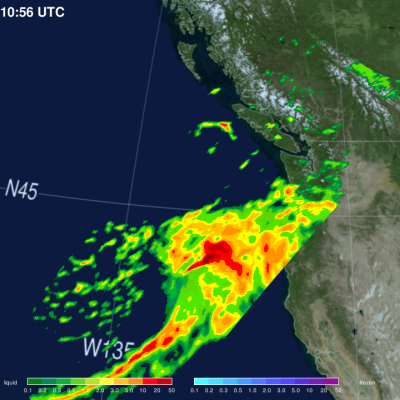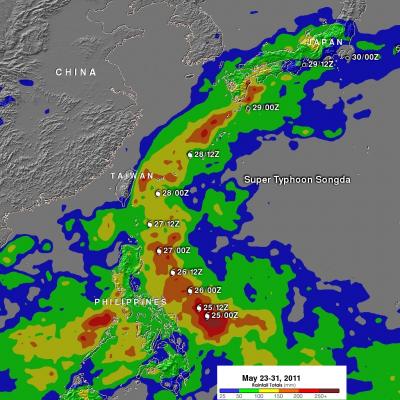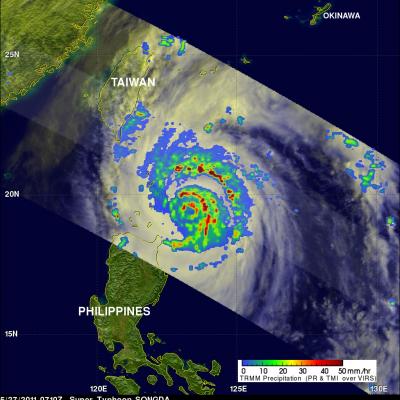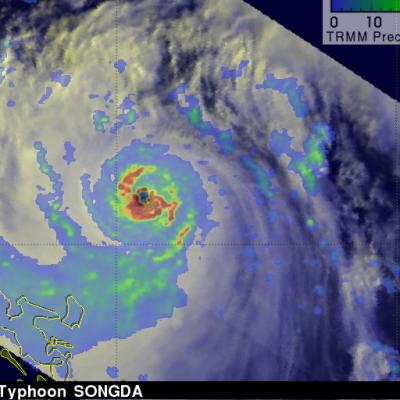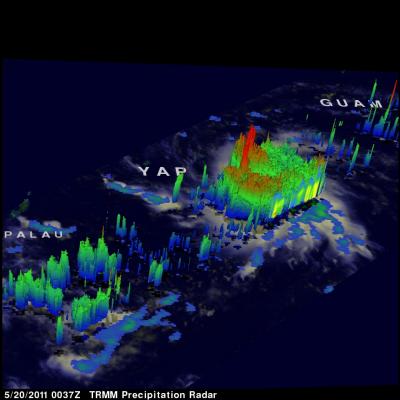GPM Looks at Rainfall in Remnants of Songda Over Pacific NW
The Global Precipitation Measurement mission or GPM core satellite saw heavy rain with rates of around 50 mm/hr (~2 inches/hr shown in dark red) in the front that absorbed the remnants of former northwestern Pacific Ocean Typhoon Songda. These images were created from data taken on Saturday, Oct. 15 as the front was affecting the U.S. Pacific Northwest. The rain is depicted in red and green areas, indicating heavy, moderate and light rain, respectively. Images produced by Jacob Reed (Telophase/NASA GSFC) and caption by Rob Gutro (GSFC)


